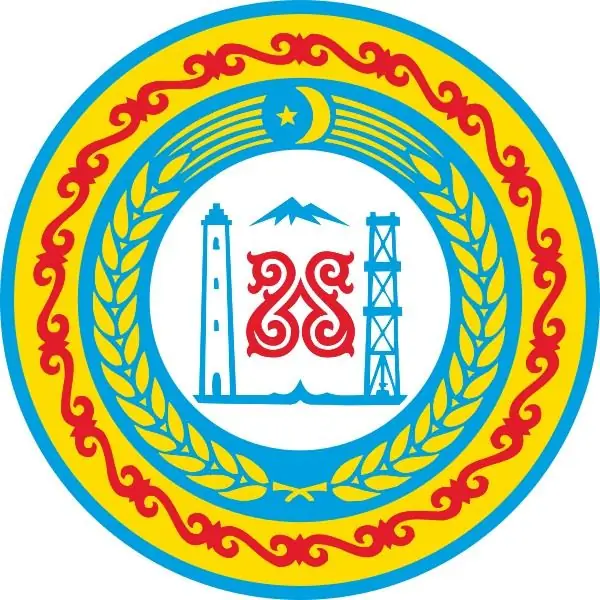
Back in June 2004, the main official symbol of the Chechen Republic appeared. The emblem of Chechnya was approved by a decree by Sergei Abramov, who at that time was acting president. The regulation on the state symbol is approved by the regulatory legal act, its description is given and the procedure for use is determined.
Description of the heraldic symbol of the republic
At the first acquaintance with the coat of arms of the Chechen Republic, the most important thing that can be noted is the harmonious combination of national ornaments and elements that determine the current position of this administrative-territorial entity. The regulation on the state symbol also notes that the sketch reflects the national mentality and demonstrates the place of the Chechen people in history and modernity.
A color photo allows you to view and highlight four colors, in the normative act they are defined as red, blue, yellow and white. In the heraldic tradition, they correspond to scarlet, azure, gold and silver. Experts note that the most popular heraldic colors have been chosen for the sketch, which have an important symbolic meaning.
The second valuable remark of scientists in the field of heraldry is the strict selection of elements for the composition, in which several important complexes can be distinguished. For example, in the central part of the coat of arms, depicted as a white circle, the main symbol details are located:
- a fragment of a traditional Chechen ornament - a symbol of unity and eternity;
- stylized mountain peaks corresponding to the geographical landscapes of Chechnya;
- the Vainakh tower, symbolizing the heroic past of the country;
- the oil rig is a symbol of economic stability and political independence of the republic.
The central heraldic symbols are framed by a blue ring, which depicts ears of wheat. On the one hand, they are associated with the economy of Chechnya and the main agricultural crop, on the other hand, this is a demonstration of the republic's wealth. In the upper part, above the ears, there is a star and a crescent, which are symbols of Islam, the most widespread religion in these territories. The outer circle of the coat of arms has a yellow background, which depicts a traditional Chechen ornament (in red).
Historical facts
The first heraldic symbol that appeared in these territories can be considered the coat of arms of the monarchical state, called the North Caucasian Emirate and proclaimed in 1919.
During the years of Soviet power, the coat of arms of the Chechen-Ingush ASSR, approved in 1978, was in force; it did not differ much from other heraldic symbols of the republics that were part of the Soviet Union.






